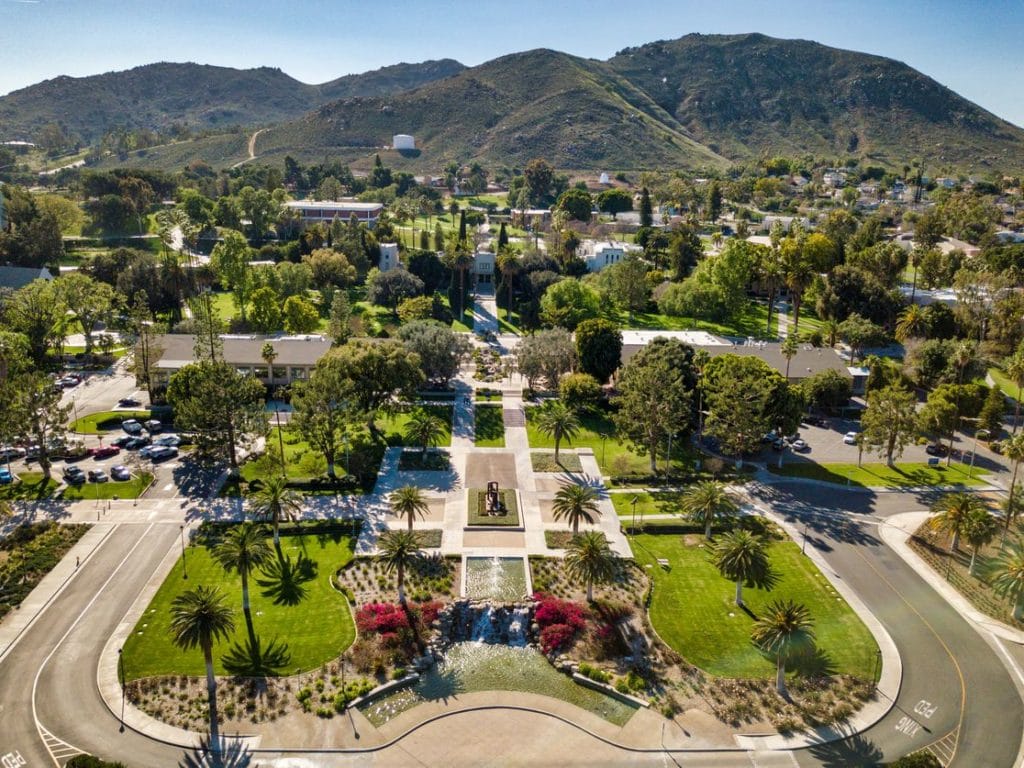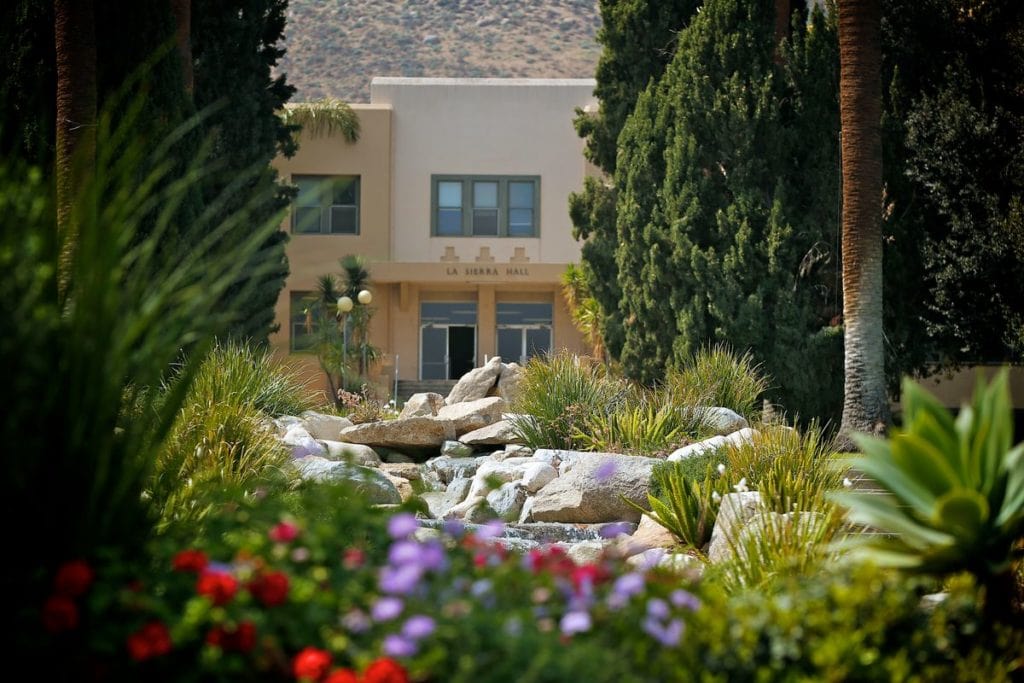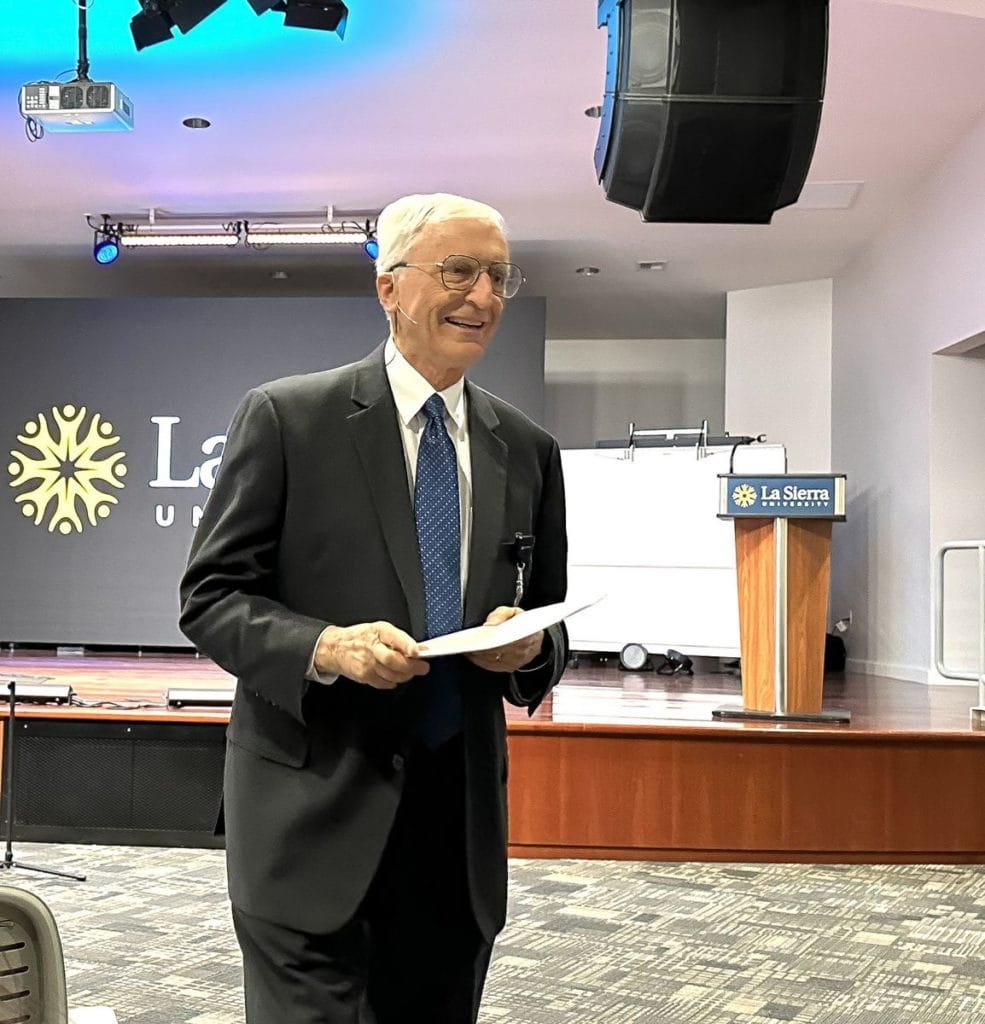
Heading into 2024, La Sierra University is charting an upward trajectory based on enrollment targets, with near-term strategic investments in personnel, increased salaries, scholarships, software upgrades, and athletics initiatives.
On January 29, the university’s board of trustees voted a budget and funding for the remainder of this fiscal year ending June 30 and the two years through 2025-2026. University leadership also drafted a follow-on aspirational plan through 2028-2029 for a total five-year proposed strategic document focused on La Sierra’s growth. On January 30 the plan was presented by La Sierra University interim president Richard Osborn during a campus town hall at the Zapara School of Business on campus.
The proposed multi-year strategy aimed at supporting employees and boosting enrollment was developed during eight meetings over the past two months of a campus leadership group consisting of top administrators, vice presidents, and deans of the university’s three schools and its college. The university’s fall 2023 enrollment stood at 1,614, while student retention between fall and winter quarters this school year clocked in at its highest rate in five years.
“The diligent work of the university administrative team under Richard Osborn’s guidance has been outstanding,” Bradford C. Newton, chair of the La Sierra University Board of Trustees, said. “We have approved the budget and funding plan and two more years and have high confidence in the university’s potential for growth. The inclusion of key campus leaders in this pivotal undertaking was a major factor in getting this work done. Now we may proceed with a multi-year strategy which lays a roadmap for the university’s future. We are grateful for the deep well of knowledge and insights the team brought to this process.”
Osborn noted in his town hall remarks, “It was a collaborative effort of everybody working together on this.” He formed the university leadership team nicknamed ExCo Premium and spearheaded the inclusion of campus leaders in trustee sessions, relaying outcomes of board decisions and leadership meetings to the campus community and in regular meetings with the faculty senate.
“Because only three months was available to prepare the plan and the need for a long-term president is essential for restructuring, visioning, and new program creation, the plan sets the stage for the future,” Osborn said. “The search process for a new president is underway with a strong set of candidates who have applied.”
The board-approved plan for finishing the 2023-2024 year calls for an immediate US$1.5 million investment in marketing, student onboarding initiatives, and information technology upgrades for more fully automated enrollment and registration, with key personnel additions and some salary increases. New hires will include refilling four vacant marketing positions, an alumni director’s post, and an associate provost’s position, and fully funding a Diversity, Equity, and Inclusion officer’s post, among others.
Proposed investments over the next two fiscal years will cover new athletics initiatives such as new sports teams and athletics scholarship increases, the beginning of university-wide salary increases, continued investments in IT and student onboarding, and a reduction in academic costs. New athletic sports in women’s flag football, women’s beach volleyball, golf, and men’s volleyball will be added in the next two years in addition to the nine teams already offered.
An increased drawdown on gains from the university’s two quasi endowment funds, net income from university-owned land leases, and the sale of two university-owned, off-campus houses will fund costs for investments over the approved budget years through 2025-2026, without touching the corpus of the land endowment.
The five-year strategy details how the university’s $10.2 million deficit will be reduced each year, aided by drawdowns on endowment gains to reach deficit elimination by 2027-2028. The current budget challenge was created by several years of enrollment declines which led to a large budget deficit this year. Going forward, successful budget performance is contingent upon the achievement of 10 percent financial full-time equivalent enrollment gains annually beginning in the 2024-2025 fiscal year that starts July 1.
Other annual performance indicators and conditions include increasing the student-to-teacher ratio, ongoing wage increases, and increased on-campus student activities. If enrollment targets come in under 50 percent of any year, the plan calls for immediate adjustments at the end of the fiscal year toward balancing future budgets.
In addition, the plan calls for the creation of a higher education task force with Pacific Union College and additional collaborations with Loma Linda University toward achieving long-term academic and financial benefits.



Cash Flow
Underpinning the university’s pivot is one of the largest endowments among Adventist universities and other faith-based universities. It consists of $140 million mostly made up of two quasi endowments that are unrestricted at the discretion of the board, and $27 million in a restricted endowment that largely goes for specified student scholarships. The institution also benefits from ground leases on three large apartment complexes that provides almost $2 million on an annual basis.
The institution has $14 million in cash reserves. All of these funds draw in considerable earnings each year, which have contributed $55 million since 2007 to the institution’s budget. The leadership team is hiring a consultant to determine best uses of additional properties held by the university.
“Our endowment is the largest for similar institutions within Adventism and more broadly except for a few elite institutions,” the team wrote in its budget document, noting that the main focus of the proposed strategic plan is investment in employee morale toward increasing enrollment. Unlike many institutions that use up cash derived from land sales for current operations, La Sierra University has preserved and grown the corpus of its endowment, which places it in one of the strongest positions of any university to deal with current challenges and prepare for the future.
“Let me emphasize that La Sierra University probably has, next to Loma Linda University, the strongest cash financial position of any Adventist university,” Osborn iterated in his town hall presentation, citing prudent financial oversight of the board and the university’s finance department, as well as the $75 million endowment created from land development during former university president Larry Geraty’s tenure.
The team noted in its report that unpredictable market forces, tenuous higher education trends, dropping K-12 enrollment in Adventist schools, and other factors all pose significant impacts to the university’s future and suggested the plan’s reevaluation after the second year of implementation.
“I think God helped establish this place,” Osborn said to faculty and staff at the town hall. He noted his parents’ path through Adventist education to graduate from La Sierra College before and after World War II. His mother’s father, Walter Lawson, ran the La Sierra College Press. “I think God was behind all of that, and I know that God can help us find the answers to these challenges. And I think I’ve seen the workings here through this kind of proposal,” he said.
“We deeply appreciate President Osborn’s leadership,” noted La Sierra University Faculty senate chair Maury Jackson, who is also chair of the H.M.S. Richards Divinity School Pastoral Studies Department. “I remain more hopeful than ever for our university’s future. President Osborn will receive much due gratitude from his soon-to-be-discovered successor for helping start a tenure without having to contend with striving for a budget that supports the mission of the university.
“The critical actions, which the Board of Trustees have made in these recent months, demonstrates their commitment to continue putting the cart, i.e., finances, where it belongs, behind the horse, i.e., mission,” Jackson said. “The new strategy, which aims to align the budget to a vision for a La Sierra University worthy of its promise for the church and the world recognizes the indispensable value faculty and staff have in the contribution to the overall mission of the university.”
The original version of this story was posted by La Sierra University.